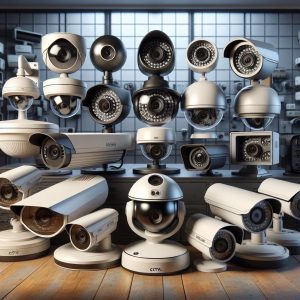Introduction
False alarms are a significant issue in security systems, causing unnecessary panic, wasting resources, and potentially leading to complacency when real threats arise. Understanding the common causes of false alarms and implementing strategies to prevent them is crucial for maintaining an effective security system. This article explores the various factors that contribute to false alarms and provides practical solutions to minimize their occurrence.
Common Causes of False Alarms
- User Error
- Incorrect Arming/Disarming: One of the most common causes of false alarms is user error. This can occur when users incorrectly arm or disarm the system, leading to accidental triggers.
- Improper Use of Equipment: Misunderstanding how to use security equipment, such as motion detectors or door sensors, can also result in false alarms.
- Environmental Factors
- Pets and Wildlife: Animals, both domestic and wild, can trigger motion sensors if they are not properly calibrated to distinguish between human and animal movements.
- Weather Conditions: Extreme weather conditions, such as strong winds, heavy rain, or lightning, can cause sensors to malfunction and trigger false alarms.
- Faulty Equipment
- Aging Sensors: Over time, sensors can degrade and become more prone to false alarms. Regular maintenance and timely replacement of old equipment are essential.
- Improper Installation: Incorrect installation of sensors and other security devices can lead to frequent false alarms. Ensuring professional installation can mitigate this risk.
- Power Issues
- Power Surges and Outages: Fluctuations in power supply, including surges and outages, can cause security systems to malfunction and trigger false alarms.
- Low Battery: Wireless security devices rely on batteries, and low battery levels can lead to unreliable performance and false alarms.
- Interference
- Radio Frequency Interference (RFI): Devices that emit radio frequencies, such as cordless phones or baby monitors, can interfere with wireless security systems and cause false alarms.
- Electromagnetic Interference (EMI): Electrical devices and wiring can create electromagnetic interference, affecting the performance of security sensors.
How to Prevent False Alarms
- User Training and Awareness
- Proper Training: Ensure all users are adequately trained on how to operate the security system correctly. This includes arming/disarming procedures and understanding how sensors work.
- Regular Updates: Provide regular updates and refresher courses to users to keep them informed about any changes or upgrades to the system.
- Environmental Adjustments
- Pet-Friendly Sensors: Install pet-friendly motion sensors that can distinguish between human and animal movements to prevent pets from triggering alarms.
- Weatherproof Equipment: Use weatherproof sensors and cameras that can withstand extreme weather conditions without malfunctioning.
- Regular Maintenance
- Routine Inspections: Conduct regular inspections and maintenance of all security equipment to ensure they are functioning correctly and replace any aging or faulty sensors.
- Professional Installation: Hire professional installers to ensure that all equipment is correctly installed and configured to minimize the risk of false alarms.
- Power Management
- Uninterruptible Power Supply (UPS): Use a UPS to provide a stable power supply to the security system, preventing false alarms caused by power surges and outages.
- Battery Monitoring: Regularly check and replace batteries in wireless devices to ensure they are operating at optimal levels.
- Minimize Interference
- Shielding and Placement: Properly shield and place security devices away from sources of RFI and EMI to reduce interference.
- Frequency Management: Use security systems that operate on frequencies less likely to be affected by common household devices.
Advanced Solutions for False Alarm Prevention
- AI and Machine Learning
- Behavioral Analysis: AI-powered security systems can analyze patterns of behavior and distinguish between normal and suspicious activities, reducing the likelihood of false alarms.
- Adaptive Learning: Machine learning algorithms can adapt to the environment and user habits over time, improving the accuracy of threat detection and minimizing false alarms.
- Integration with Smart Home Systems
- Smart Sensors: Integrate security systems with smart home devices that can provide additional context, such as smart cameras that verify motion sensor alerts before triggering an alarm.
- Automated Responses: Use smart home automation to create scenarios where multiple sensors must be triggered before an alarm is activated, reducing the chance of false alarms.
- Enhanced Verification Methods
- Two-Step Verification: Implement two-step verification processes, such as requiring both motion detection and video confirmation before an alarm is triggered.
- Remote Monitoring: Use remote monitoring services that can verify alarms before dispatching emergency responders, reducing the number of false alarms reported to authorities.
Conclusion
False alarms can undermine the effectiveness of security systems and lead to unnecessary stress and resource expenditure. By understanding the common causes of false alarms and implementing preventive measures, users can significantly reduce their occurrence. Advanced technologies, such as AI and smart home integration, offer promising solutions to further enhance the reliability of security systems. With proper training, regular maintenance, and the adoption of innovative technologies, false alarms can be minimized, ensuring that security systems provide the protection they are designed to deliver.





